As wildfire season approaches, remote First Nations prepare to fight from the ground up
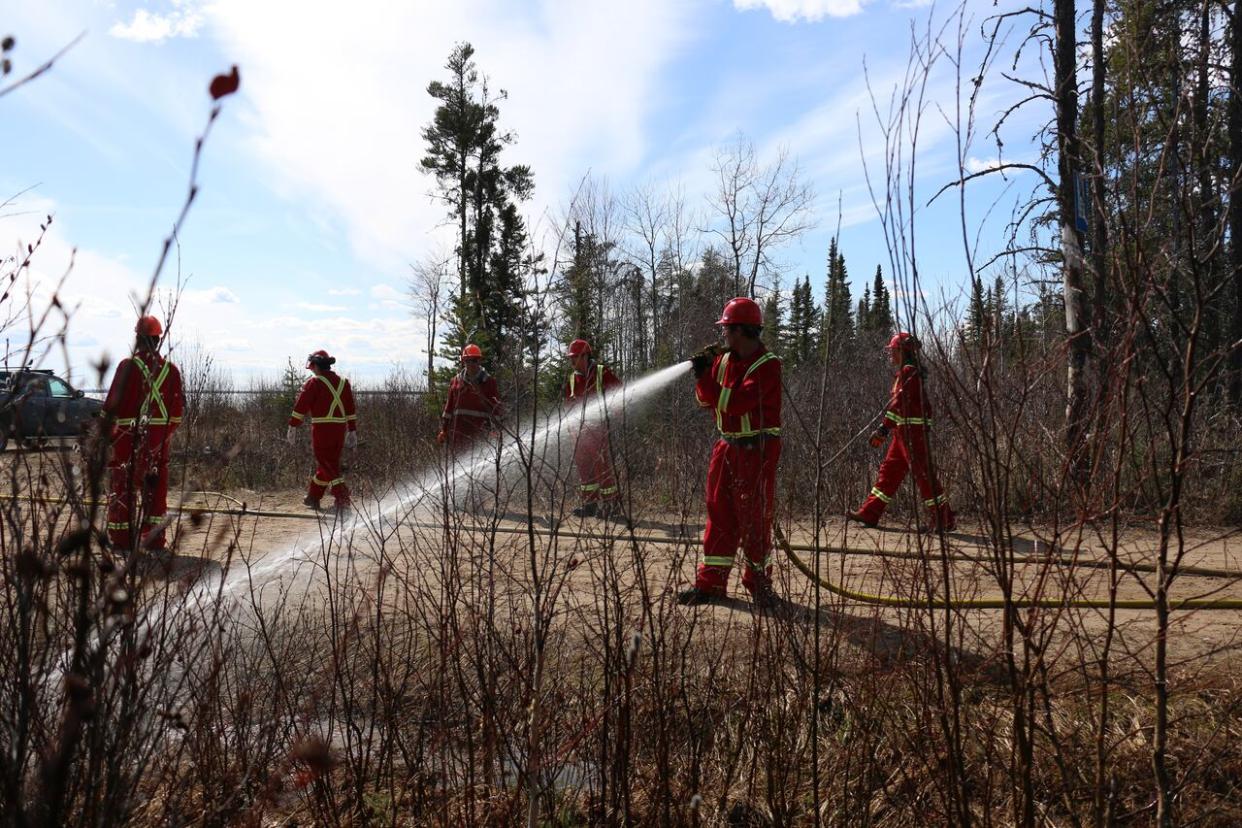
As Calvin Charles sprays water up and down a tree trunk, the force from the hose is strong enough to make its target sway.
It's a clear, sunny day on the shores of Lac la Plonge in northern Saskatchewan, but in Charles's mind, that tree is on fire.
"I grew up on the trapline and I've been around trees my whole life," he said.
"When I see them burn, I don't like that. The aspect of saving nature is really heartwarming."
But it was saving homes and people that brought Charles and about two dozen others here for firefighting training put on by the Prince Albert Grand Council. Some are brand new to the craft while others, like Charles, have volunteered for years. After this training, he'll be able to work seasonally as a firefighter based in the north.
He first suited up after Stanley Mission, his own First Nation, was almost destroyed by a fire in 2015.
"After getting evacuated, I felt helpless," he said.
"Getting the training I needed to be able to put that fire out – I feel less helpless."
When it comes to remote wildfires, First Nations community members are often the first to feel the heat, smell the smoke and deal with the danger.
The federal government suggests 80 per cent of First Nations are in areas prone to wildfires, and many communities are preparing for what they worry could be a catastrophic season.
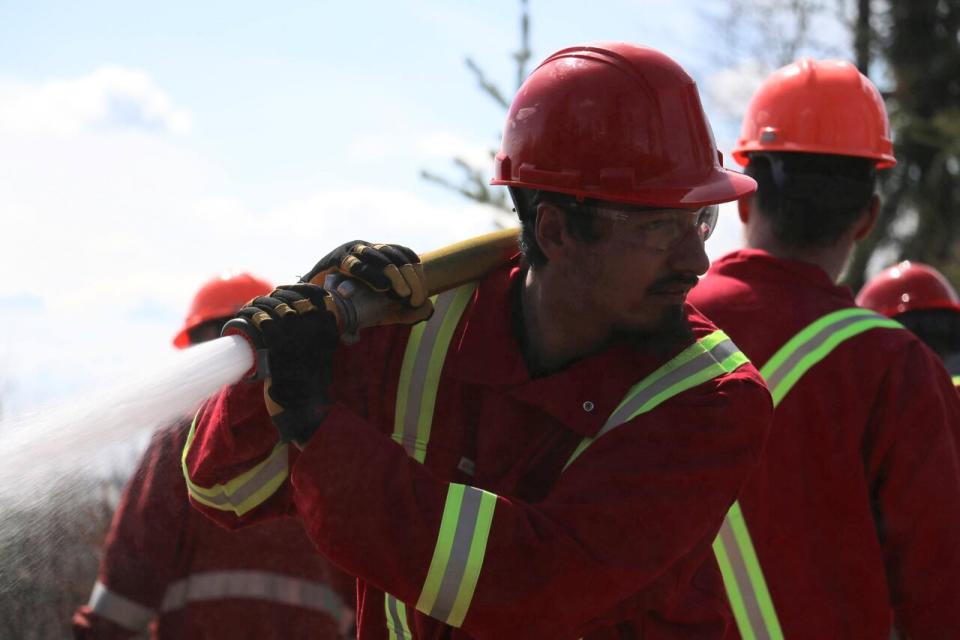
Calvin Charles, from Stanley Mission, Sask., practices spraying down the boreal forest during firefighting training in April 2024. (Sam Samson/CBC News)
Minimum, standardized training for First Nations
In Saskatchewan, there are different levels of firefighting training. Charles and the others won't fight fire from above, but they can help mop up sections doused by water bombers and work to control sections from the ground.
And in the north, you use what you can.
The group learns how to connect a small, cord-pull motor to a half-frozen lake for their hoses. They practice building fire breaks into the forest floor with pickaxes, since machines often can't get to their remote locations.
They've all had to travel for hours to get here, since there aren't enough trainers to get to each community in time.
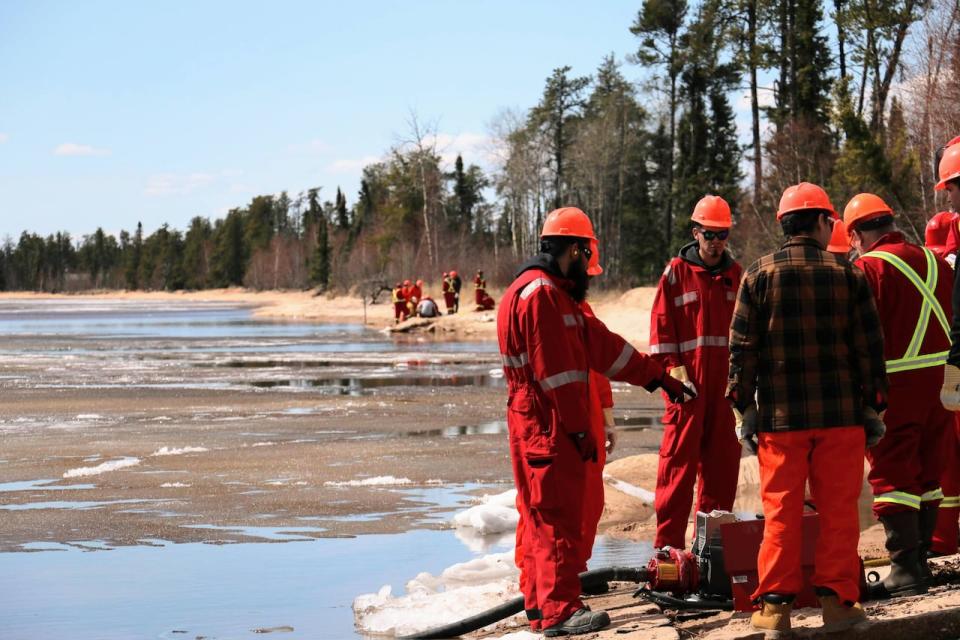
The group of trainees learns to put motors into the half-frozen Lac la Plonge. In remote areas, firefighters will often use whatever water resource is around to douse flames. (Sam Samson/CBC News)
Access to firefighting training has been a longstanding issue for First Nations. In a national, five-year strategy to protect First Nations from fire, Ottawa and other groups hope to have minimum, standardized firefighting training for communities by 2025.
That goal might be unrealistic, according to some, since many communities don't even have basic infrastructure.
"Especially rural and remote communities, they don't even have access coming in and out to get training. There are many First Nations communities that don't even have Internet or cell service," said Cindy Woodhouse Nepinak, national chief of the Assembly of First Nations.
"We have to keep that all in the back of our minds that not everybody's in downtown Toronto."
While Ottawa dedicated$175 million in this year's budget to help First Nations address this year's and future fire seasons, Woodhouse Nepinak hoped for more to get newer equipment for First Nations firefighting crews.
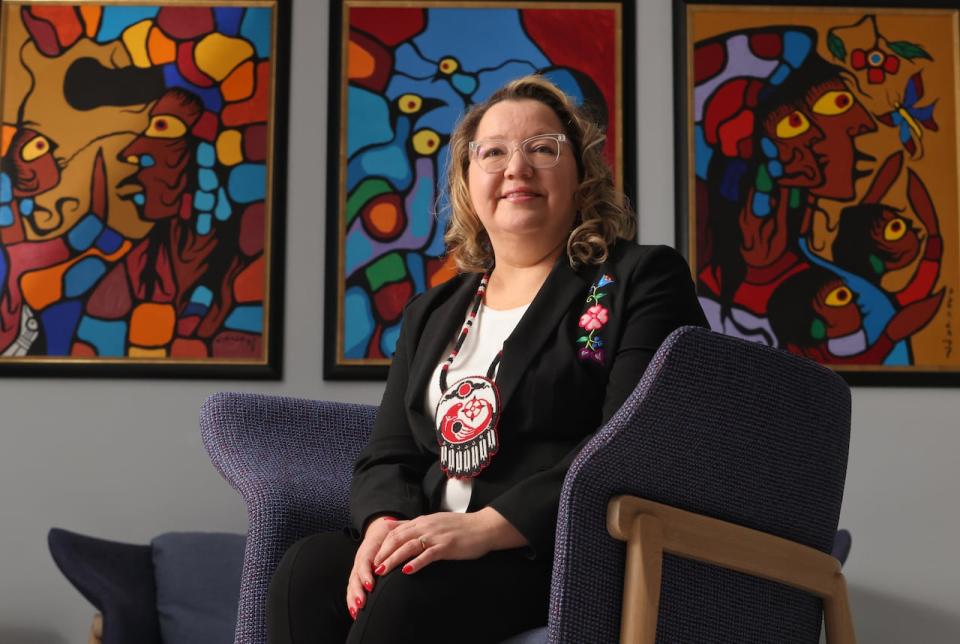
Assembly of First Nations National Chief Cindy Woodhouse Nepinak wants to see more investment into firefighting training, equipment and infrastructure in Indigenous communities. (Patrick Doyle/Canadian Press)
But even if funding had been higher, there are other barriers to getting systems set up quickly for this fire season.
"Most communities I deal with, there are no paved roads. There are no water resources like hydrants," said Jason Wigton, director of technical emergency services for the Kee Tas Kee Now Tribal Council, which serves five First Nations in northern Alberta. Four of those were forced to evacuate due to wildfire last year.
"Getting a custom truck takes 18 to 24 months. I've ordered trucks last November that won't be ready until spring of 2025."
While Wigton and others are preparing as best they can, he says teaching fire prevention and safety will help the most this season.
First Nations in Alberta get emergency coordinators
Last year, wildfires caused more than 90 evacuations in First Nations communities across Canada — many in northern Alberta. This year, Ottawa is giving each First Nation in that province money to hire an emergency management coordinator.
Other communities across Canada have these positions, but the Alberta jobs are unique since there will be one per community, and the position will be full-time. The funding lasts for three years.
The position could be crucial for the Athabasca Chipeywan First Nation, whose members were forced to flee their homes last year. Many residents can only leave in an emergency by air or water. It's a complex process only made worse this year since low water levels threaten to trap boats in the bay.
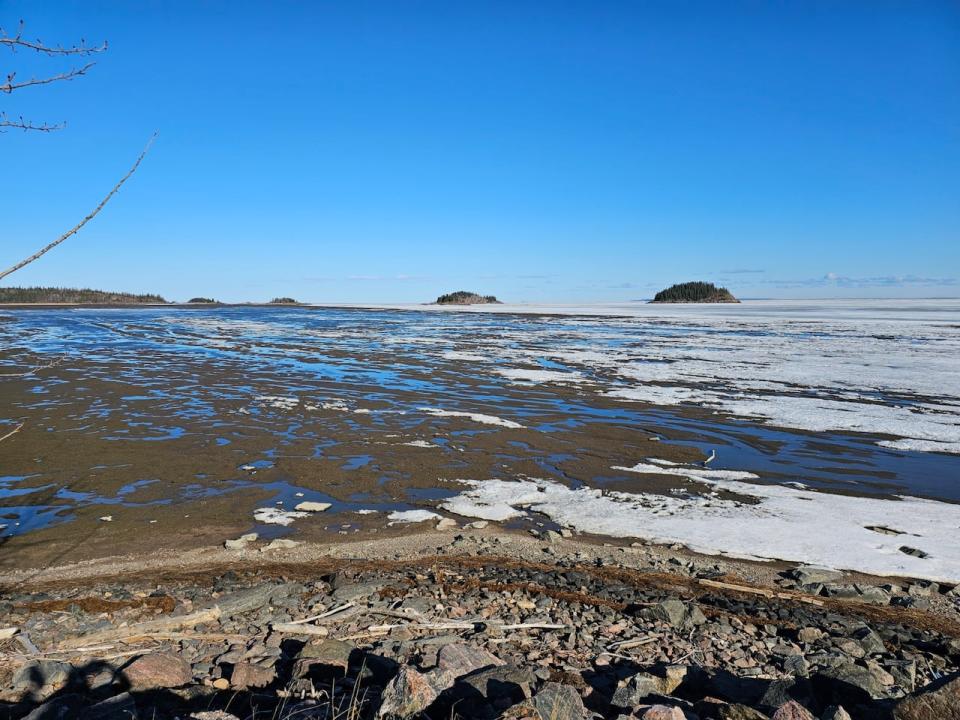
Community members say the water is so low in the bay of Fort Chipeywan, Alta. they're concerned boats could get stuck during emergency evacuations. (Athabasca Chipewyan First Nation)
"People in the community say that they've never seen it this bad in their lifetime," Chief Allan Adam said.
"The whole community is at risk if there was a forest fire that burned out of control."
Adam said the bulk of the new emergency management coordinator's urgent work would be fire prevention education, like teaching people how to clear debris from their homes and reminding them not to burn during bans.
But there will be emergencies to plan for, he said. Fires are pressing, but floods and dangerous cold snaps have all caused danger and damage in recent years.
So while the emergency coordinator position is welcomed, Adam says the three years of funding isn't enough to deal with these long-term problems.
"Climate change is happening. It's not going away, and it's getting worse every year," he said.
"Unfortunately, we're not going to escape it either."


